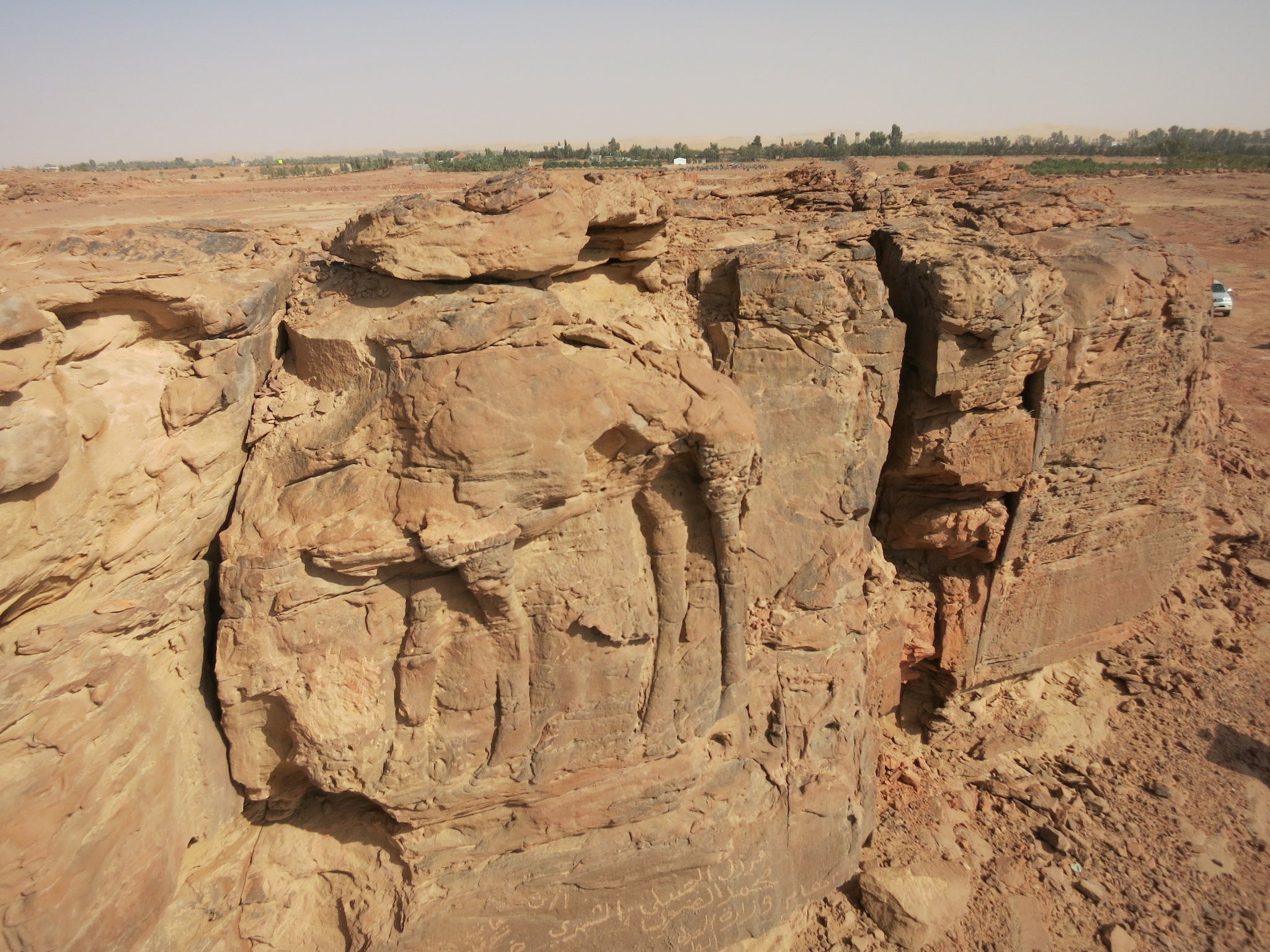Life-size camel carvings dating back 2,000 years found in Saudi Arabia
Sculptures believed to be 'unprecedented' in terms of both size and quality

Archaeologists have discovered a number of life-size camel carvings in the middle of a Saudi Arabian desert.
A Saudi-Franco team of researchers explored what has become known as “Camel site” in the province of Al Jawf in north-west Saudi Arabia.
The findings are thought to be “unprecedented” in both their size and quality, and are believed to be the first life-sized “camelids and equids” carved in both low and high relief.
Low relief refers to carvings which are shallow in depth, while high relief normally shows at least half of the sculpture mass protruding from the background.
Camels have been represented in art in the region for centuries, but the researchers noted the exceptional technical skill required to make the carvings.
Archaeologists, who explored the site between 2016 and 2017, believe the art works could have been a place of worship or a marker in the otherwise indistinct landscape.
“That this isolated and seemingly uninhabitable site attracted highly skilled rock-carvers is striking testimony to its importance for surrounding populations,” the researchers wrote in the journal Antiquity. ”Perhaps serving as a boundary marker or a place of veneration, the Camel Site offers important new evidence for the evolution of Arabian rock art.”
Researchers believe the art draws from an Arabian tradition with Nabataean and Parthian influences.
“Though the site is hard to date, comparison with a relief at Petra, Jordan, leads the researchers to believe the sculptures were completed in the first centuries BC or AD,” the authors said.
“Camel Site can now be considered a major showcase of Saudi rock art in a region especially propitious for archaeological discovery.”
Guillaume Charloux, one of the lead authors, said the findings were “truly unique”.
“Apart from the flint found nearby, we have no diagnostic material, and we are not sure whether these tools were used to carve the sculptures,” he said.
“The Nabataeans were strongly implanted in the area, and could have had a community nearby. They also traded with Mesopotamia, which suggests the spurs may have been a milestone on an ancient caravan route.”
Join our commenting forum
Join thought-provoking conversations, follow other Independent readers and see their replies
0Comments